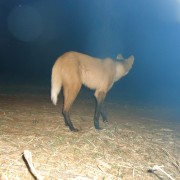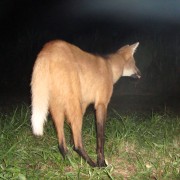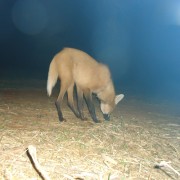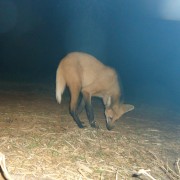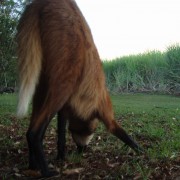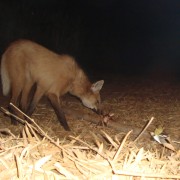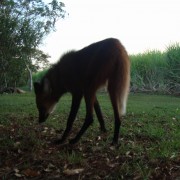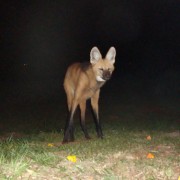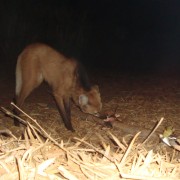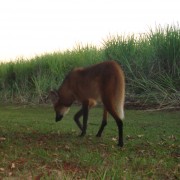Biodiversity
 Maned Wolf
Chrysocyon brachyurus | Illiger, 1815
Maned Wolf
Chrysocyon brachyurus | Illiger, 1815
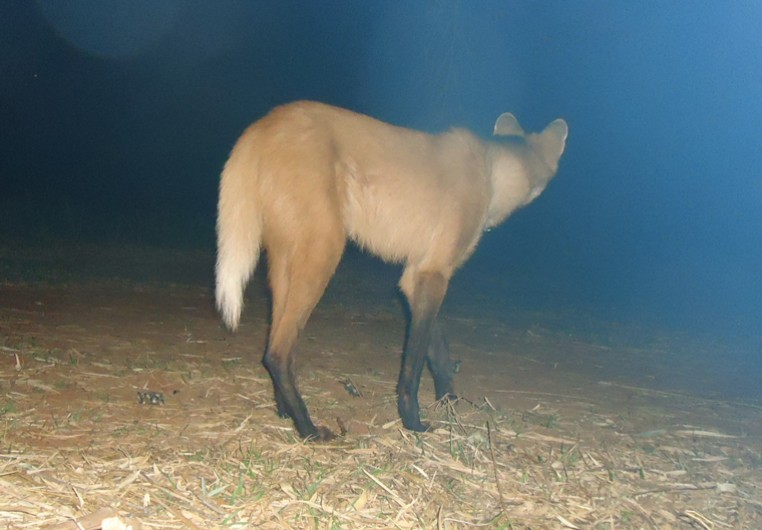
Characteristics: Species measuring about 75cm to 85cm in height and with a tail measuring 40cm. It is characterized by long limbs (which can reach 75cm), a small head relative to the body, large ears and tapered snout. It is an overall orangish-brown in color, with a black tip of the snout and extremities. The pups are dark-brown to black.
Distribution: Central Plateau, Mato Grosso Pantanal, Southernmost Amazon basin to the boundary with the Atlantic Forest areas.
Habitat: "Dirty fields," with weeds, bogs, lagoons, and marshes with low waters and aquatic vegetation.
Habits: Crepuscular, nocturnal, and solitary species, living in areas of up to 115 Km2.
Diet: Omnivore and generalist, feeding on birds, including chickens, turkeys and ducks, fruit, such as the nightshade (Solanum sp.), guavas, bananas, inaja palm coconuts, insects, and carrion.
Breeding: The gestation period is about 65 days, and, on average, 2 pups are born.
In the UFRA area: This mammalian species was identified in 8 of 10 studied habitats. These habitats were organic cane fields, wetlands with herbaceous plants, wetlands with riparian forests, restored native forests, mixed forests in regeneration, native forests, drainage ditches, and forests in spontaneous regeneration. It is a widely distributed species. It was seen 33 times and is considered moderately frequent. It is a species of great ecological value and is threatened with extinction, ranked in the vulnerable category by the scientific community. This species was often detected in the sugarcane carrier tracks or sheltering in the crop's plots.




